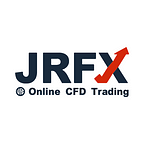On Wednesday (July 21), the U.S. dollar index fell for the first time in five trading days, as safe-haven demand cooled with the rise in U.S. bond yields and the U.S. stock market; commodity currencies led the rise of G-10 currencies, and the Norwegian krone and the Canadian dollar performed optimal. The price of gold fell for the second consecutive trading day to a low of more than a week, and the yield on the 10-year U.S. Treasury continued to rebound from a 5-month low, suppressing demand for precious metals. Oil prices rose more than 4%, and crude oil inventories in the Cushing area of Oklahoma fell to the lowest level in 18 months, offsetting the impact of the first increase in US crude oil inventories last week since mid-May; the three major US stock indexes closed up and The decline in EIA fuel oil inventories is good for oil prices.
On Thursday (July 22), the international gold price fell, and the technical outlook was still bearish. The market outlook is expected to drop to $1,771. However, the dollar index ended its rally overnight, limiting the downside of gold prices. Investors temporarily downplayed economic worries about the increase in cases of Delta virus variants. For this reason, traders cut their bets on the Fed’s interest rate hike, and it is expected that ultra-loose policies may need to be maintained. For investors looking for clues to stimulus policies, the US unemployment claims report on Thursday will be the next key data. The U.S. Index refreshed its high since April 1st to 93.194 overnight, but closed down 0.20% to 92.785 in the final trade, ending the four consecutive daily positives. Part of the reason was the positive corporate earnings report, because investors largely ignored the Delta virus. Variations and inflation concerns.
After rebounding in recent weeks, the price of gold has stabilized at around US$1,800 per ounce, but even if the US inflation-adjusted yield fell further in the negative range, the price of gold could not rise further. So far, gold investment demand has been on the spot, and this month the exchange-traded fund (ETF) showed a situation of outflow of funds. Compared with the past few years, hedge funds have relatively few positions.
Phillip Streible, chief market strategist at Blue Line Futures, said that the stock market breathed a sigh of relief, and U.S. bond yields and oil prices rebounded again. These are signs of re-inflation trading, which is not good for gold. But Streible said that the inflationary environment of accelerating economic growth and rising inflation is beneficial to silver, platinum and palladium, which also have industrial uses. Commerzbank analyst Carsten Fritsch said the rise in US bond yields was “enough to erode” gold’s gains.
Next week, the Fed will usher in its July interest rate resolution, and its policy on reducing bond purchases will become the focus of attention. In general, the Fed’s tightening policy and the strengthening of the US dollar will be the general trend. The gold price will further decline in the medium and long term, and the short-term shock may become weaker, and there is not much room for operation. The bottom needs to pay attention to the support near the low of 1794 on July 21. If it falls below this level, activists can continue to chase the short. If the price of gold stays above 1794, investors are advised to wait and see for the time being.
